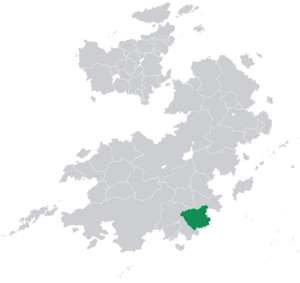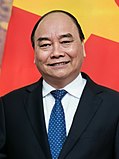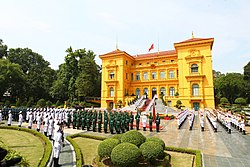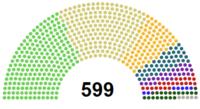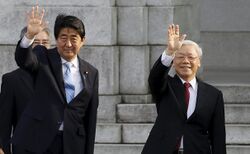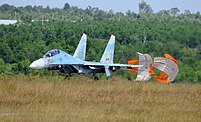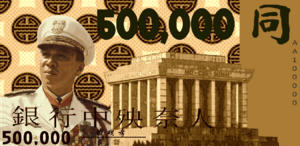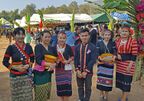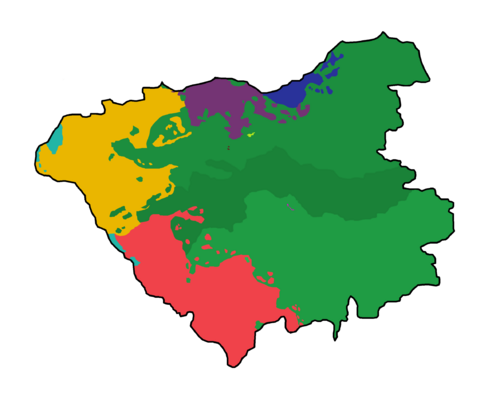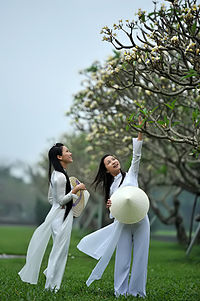Nainan: Difference between revisions
No edit summary |
No edit summary |
||
| Line 112: | Line 112: | ||
|HDI_rank = | |HDI_rank = | ||
|HDI_ref = <!--(for any ref/s to associate with HDI number)--> | |HDI_ref = <!--(for any ref/s to associate with HDI number)--> | ||
|currency = Nainese | |currency = Nainese đồng (同,đ) ({{wp|ISO 4217|NND}}) | ||
|currency_code = <!--ISO 4217 code/s for currency/ies (each usually three capital letters)--> | |currency_code = <!--ISO 4217 code/s for currency/ies (each usually three capital letters)--> | ||
|time_zone = <!--e.g. GMT, PST, AST, etc, etc (wikilinked if possible)--> | |time_zone = <!--e.g. GMT, PST, AST, etc, etc (wikilinked if possible)--> | ||
Revision as of 22:30, 16 August 2022
This article is incomplete because it is pending further input from participants, or it is a work-in-progress by one author. Please comment on this article's talk page to share your input, comments and questions. Note: To contribute to this article, you may need to seek help from the author(s) of this page. |
Harmonious Republic of Nainan 共和諧和奈人 Cộng Hòa Hài Hòa Nài Nhân | |
|---|---|
| Motto: 眾些仕盛旺𥹰𨱽! Long shall we prosper! | |
| Anthem: 𣎃爸𧵑團結吧解放 March of Solidarity and Liberation | |
| National Seal | |
Nainan in Coius | |
| Capital | Trinhieu |
| Largest city | Setrong |
| Official languages | Nainese |
| Recognised regional languages | Nyaram Makhao Ryo Danok |
| Ethnic groups | |
| Religion | |
| Demonym(s) | Nainese |
| Government | Unitary authoritarian one-party republic |
| Lê Tranh Lộc | |
• Premier | Quách An Tương |
| Hoàng Lan Mai | |
| Tiêu Công Lý | |
| Legislature | People's Senate of Nainan |
| Establishment | |
• Independence from Werania | 16 April 1953 |
| 6 February 1956 | |
| Population | |
• 2019 estimate | |
| GDP (PPP) | estimate |
• Total | $1,063 Billion |
• Per capita | $18,745 |
| GDP (nominal) | estimate |
• Total | $548.7 Billion |
• Per capita | $6,545 |
| Currency | Nainese đồng (同,đ) (NND) |
| Internet TLD | .nn |
The Harmonious Republic of Nainan (Nainese: 共和諧和奈人; Cộng Hòa Hài Hòa Nài Nhân), commonly referred to as Nainan (Nainese: 奈人; Nài Nhân), is a unitary authoritarian one-party republic located in Southeast Coius. Sharing borders to the west by Kuthina and to the north by Zomia, and has a coastline to the southeast on the Coral Sea. It's capitol is the city of Trinhieu, which is a historic capitol and the political center of Nainan. It's largest city is Setrong, which is the financial center of Nainan. With a population of 83.8 million people it is one of the most populated nations in the world. There are many different ethnic groups alongside the Nainese that mostly live in the western half of the country.
The land had been inhabited since ancient times but the first notable cultures were the Nài Hóa peoples, an !austroasiatic who likely originated from the eastern border of Shangea and settled along the Serpent and Black Rivers in eastern Nainan. The !austronesian Proto-Danok people arrived from Kabu and !big island around the same time and settled on the Black River. The first Nainese kingdom was the Giang dynasty around 200 BC founded in Tài Lẽ. The Giang dynasty was greatly influenced by the Xiang dynasty in Shangea and adopted their script. By 590 the Giang dynasty fell and the kingdom was split between the Trinhieu influenced Ban dynasty in the north and the Setrong influenced Yên dynasty in the south, this became known as the Two Kingdoms Period. Around 520 Nainan would be conquered by the Svai Empire.
The Svai empire conquered the Yên and turned Ban into a tributary state, Svai rule continued until 1066 when Nainan lead by folk hero Lady Lương and General Sang Quang Huy pushed out the Svai empire and created the Great Lương dynasty which united all of Nainan and conquered neighboring states like the Danok and Makhao kingdoms. During this time much of Nainan converted to Badi. The Lương dynasty continued until 1456. The Thân dynasty would take over, however their rule was greatly unpopular and eventually the Aguda Empire would take over Nainan.
The Aguda would rule Nainan from 1480 until Nainan was conquered by Intharatcha and the Khaunban Empire in 1658 until the rebellion of general Vĩnh Nhật Tấn and the creation if the Vĩnh dynasty, which would rule Nainan as the rise of Euclean influence grew in Southeast Coius. Werania would eventually turn the kingdom into a colony called the Nainese Commissariat, the Vĩnh would be replaced by the Nhâm dynasty in 1890. A period of industrial growth would occur in Nainan in the times leading up to the Great War. The Entente would occupy Weranian Nainan until their defeat.
After the war the Nainese Commissariat became very disconnected from Werania, and in 1953 King Vinh Áo would declare independence as the Kingdom of Nainan. The Kingdom was very unstable and would collapse in 1956 at the beginning of the Nainese Civil War, which saw the rise of the revolutionary nationalist faction of Hoàng Viện Trai and the Nainan People's Republic, the Kingdom fell shortly after the civil war began, and continued until 1964 the nationalists would eventually be victorious in the war. The Harmonious Republic would take over and became a one-party state, lead by the Nainan People's Solidarity and Longevity, following the ideology of Tự Ý Chí.
The country would subsequently modernize it's cities and ban all opposition, using it's secret police force, the Van Dieu, and military power to do so. In 1975 Trai was assassinated and the authoritarian levels deepened. Only until the 21st century were state powers and restrictions rolled back somewhat. In the early 21st century the county underwent an era political infighting between factions of the party. Today Nainan is lead by Lê Tranh Lộc and the Patriotic Faction of the party. Nainan today is considered one of the most authoritarian states in the world, today it is part of the BUD, IFDS, and the CN.
Etymology
The word "Nainan" is an exonym based on the pronounciation of the native name of the nation, written in Chữ Mới as Nài Nhân (Chữ Đông: 奈人). The words come from Shangean characters Nài(奈) and Rén(人) meaning "enduring people", which translate into Chữ Đông as Nài Nhân.
History
Ancient
Antiquity
Giang dynasty
Medieval
Two kingdoms period
Svai rule
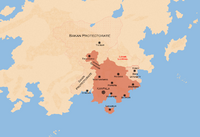
The Svai Empire conquered the Yên dynasty in 520 under the rule of Preahrith I, their Ban dynasty rivals had been forced to make a deal with the Svai to become a tributary state of their Empire in exchange for autonomy without direct rule. However despite their independence from the Svai, the Ban's politics was greatly influenced by the empire, and their trade and taxes were practically controlled by the Svai. Svai rule would continue for nearly 6 centuries.
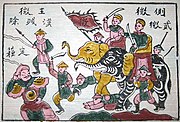
There were multiple revolts during Svai rule, the largest was the Tết Sisters Rebellion in 604, lead by the Sisters Tết, it saw short-lived independence of the Tết dynasty in southern Nainan, it was eventually put down by both the Svai and Ban dynasty. Numerous smaller rebellions occurred and the Svai Empire would attempt to strengthen their hold in the region. The Ban dynasty was seen as traitors by the people of Nainan and by the 9th century their rule was greatly being weakened and unpopular.
In 1066 a large rebellion against the Ban dynasty began in Tài Lẽ, lead by Lady Lương and former Ban general Sang Quang Huy overthrew the Ban dynasty and invaded the Svai-ruled territories of Nainan. Svai forces were defeated by the Nainese at the Battle of Sái Trụ Bay. By 1067 Lương and Sang had conquered Setrong and reunified Nainan, and founded the Great Lương dynasty.
Great Lương dynasty

The Great Lương dynasty reunited and invigorated the Nainese peoples together, they pushed out the Svai and formed a large army. They would conquer dozens of neighboring states. Lady Lương became the first Empress of Nainan, and gave herself the title "Azure Dragon of the East" (𧏵撑𡗶𧵑方東; Rồng xanh trời của phương Đông). The Lương became a regional power within Southeast Coius. Her rule saw the rise in Nainan's economic strength and the size of the cities of Tài Lẽ, Trinhieu, and Setrong grew immensly. Lady Lương and Sang were Badi and began a massive promotion of the faith in Nainan, it became particularly more popular in the northern areas during her rule. Sang Quang Huy would command the military with Lady Lương until his death, after this Lương stopped her expansion of Nainan and would attend more towards modernizing the nation. Her rule began the use of imperial examinations to build a stronger government and was used to select regional governors. In the later part of her rule she began to establish treaties with neighbors. Lương and Sang today are considered national heroes of the Nainese people.
She would die in 1106 and was succeeded by her son Lương Vĩnh Hưng, his rule saw a continuation of his mother's policies, he was credited with the finishing of the creation of Nainan's oldest university, during his rule he instated that Badi and Zohism be the two state religions of Nainan. The Lương repelled numerous invasions during their rule and began to focus their military solely on defense of the empire, making dozens of military instillations on it's frontiers, in the 13th century the Nainese began settling westward and inland and pushing back various groups such as the Makhao and the Ryo.
The Lương dynasty would continue to be the largest Nainese dynasty and ruled until the 15th century when their last ruler died without an heir. They would become replaced by the serving regent Thân Khắc Thành, and their dynasty, the Thân dynasty. Turmoil caused by the transition lead to rebellion and the size of the nation diminished.
Thân dynasty
Early during the rule of the Thân dynasty the country shrunk when the periphery of the realm rebelled, mainly due to being different ethnic groups than the Nainese, including the Danok and Ryo. The Thân were religiously Dai Tin, and against the syncretic use of the faith with Badi and Zohism. The government of the Thân, especially under King Thân Hồ Nam, began to promote Dai Tin, which was then less commonly practiced by the Badi and Zohist majorities, except for the large number of syncretic followers of the faith.
The height of the Thân was during the rule of Thân Hữu, who ruled from 1470-1491, his rule saw the return of Dai Tin, although mostly syncretic with the two other major faiths, among the Nainese populace. He also tolerated the Badi and Zohist people in the country, as well as the recently introduced Irfan minority, unlike many other Thân rulers. His legacy made him the most popular of the Thân rulers, later during his rule he began the construction of the Palace of Literature, a massive citadel with a large collection of Nainese literature in Trinhieu. He is stated to support promoted the Nainese culture for future generations, and that the Palace of Literature's purpose was to do that.
After Thân Hữu died in 1491, he was replaced by other rulers who were less tolerant of the Badi and Zohist faiths. Rulers such as Thân Quốc even began arrests of Badist religious scholars and leaders. Later rulers began removing Zohist monastaries in the city of Tài Lẽ, this caused a rebellion by Zohists in the southern regions of the country that greatly weakened the Thân's legitamacy. Soon after threats of neighboring empires caused problems for Nainan, the Badist Aguda Empire was gaining ground to the north, and the Badists and Zohists allied together and began to rebel against the Thân in 1511.
The Aguda Empire took advantage of this and invaded and conquered. The Badist populace was very much welcoming of the Aguda and supporting their ruler and were given support by the Aguda. The last Thân ruler was overthrown by the Aguda.
Early Modern
Aguda rule
Khaunban rule (1658-1684)
- Intharatcha takes over
- Vĩnh Nhật Tấn is one of his Gods of War
- Vĩnh rebels and forms own dynasty
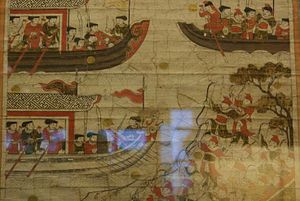
Vĩnh dynasty
- Trade with Senria, Toki, and Euclea increase
- Peasant revolt
- Euclean influence grows
- Werania takes over
Weranian rule

- King kept as leader alongside a mandate administrator
- Projects expands economy
- Modernization
- Great Collapse in Werania effects colony
Great War
- Occupied by Gaullica and Shangea
Kingdom of Nainan
- Unrest
Civil War (1956-1964)

Late 20th Century
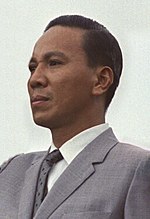
- Hoàng Viện Trai Directorship
- Hoàng Viện Trai assassinated
- Government hold on rights expands
- Reforms
Modern Nainan
- Creation of political factions in NPSL
- Slight removal of government power
Geography
Paretia is approximately 867,292.16 km2 in size. It is located in Southeast Coius, it is located along the Coral Sea. It is a relatively large country in Coius, it has a somewhat diverse array of biomes and climates, though it is generally warm. Nainan has historically been centered around three rivers, the Black River, the Raicang River, and the Serpent River, located north to south respectively. The North and Southern parts of Nainan are geographically and culturally different in many ways, Nainan is usually divided between the north and south along the Raicang. The eastern half and western half of Nainan are also sometimes divided, usually due to geographic and cultural differences, the east being mostly Nainese and the west being mostly minority groups.
Eastern Nainan is generally flat, with three major river deltas along the Black, Raicang, and Serpent Rivers. The largest is the Serpent River Delta in the south, where the city of Setrong and the surrounded area is mostly located on. In the north the capitol of Trinhieu is located along the Black River. The inland western regions of Nainan are much less flat and there are many rolling hills and valleys, including the Là Thao Ridge, which divides the western Makhao Plateu from the rest of Nainan. There also is the Southeast Coian Range, which is where the highest point in Nainan, Đá To Ca, at 3,095.1 meters high, is located. The coast of Nainan varies from flat to rocky depending on the area of the country. there are hundreds of sandy beaches, it's lowest point is near the town of Lụt Làng, along the Serpent Delta at 2 meters below sea level.
The islands of Trụ Trời Bay
The Serpent River delta marshland
The Black River outside of Trinhieu
The Là Thao Ridge in western Nainan
Climate
The climate of Nainan is generally warm, most of the country either ranges from temperate to tropical climates depending on how north. Most of the tropical climate areas are located in the north around the Black River, and along most of the coast. These areas include rainforests that experience monsoon weather. The Temperate areas are generally in the south around the Serpent River and in the inland highlands and mountainous areas. Nainan gets much sun during the year, giving the country fairly high temperatures.
Winter time in Nainan usually lasts around from May to September, temperatures generally drop due to cold air from the Shalegho Mountains funneling into the area, as well as polar air travelling north from the continent of Glacia. The northern region of Nainan usually has only a rainy and dry season, wile the southern areas can have around four seasons due to a more temperate climate. In the south the rainy season lasts usually from November to March, and dry season during the rest of the year. Nainan is affected by around 9-10 tropical cyclones on average per year, some reaching typhoon strength. Many areas of Nainan are heavily flood-prone and flood multiple times a year, the government has tried to combat this with new levee systems.
Biodiversity
Nainan is a biologically diverse nation due to it's warm climate, with hundreds of species of animal and thousands of species of plant life. The geographic diversity of Nainan also aides in it's diverse biological ecosystem. The plant species of Nainan are very diverse due to the humid climate of the country, it's rainforests are rich in plantlife.
The national animal of Nainan is the water buffalo, which are common across Nainan's agricultural industry. The national bird of Nainan is the mythical Chim lac bird, which has it's historical roots tracing back to the beginning of civilization in Nainan.
Some other common animals found in Nainan include the Southeast Coian leopard, the red-shanked Douc, Coian Openbill, Nainese pond turtle, and the Sun bear. In Nainan there are several species that are considered endangered or worse, poaching is a common problem within the country, and is responsible for much of the population decline of some species, as well as deforestation of the country's forests and rainforests. Some indangered species include the Nainese pond turtle, Kasine crocodile, and the Lepidoptera butterfly. Some common coastal ocean species include sea turtles, dolphins, Shangean white dolphin, and the dugong.
The National flower and plant of Nainan is the Lotus flower. Of the flora of Nainan it is extremely diverse due to the warm climate of the country, some common plant species include bamboo, dragon fruit, lotus, Banyan tree, Banyin creeper, water lily, and Palm tree. Similarly to the animal species of Nainan, there are many endangered plant species in the country as well, mainly caused by deforestation which usually to make room for cities, towns, or agricultural expansion.
Nainan's government has designated protected areas for plant and animal species where they are protected and hunting or deforestation is strictly prohibited by the government and have major legal repurcussions.
Government and Politics
The 1964 constitution is the founding basis for the functions and layout of Nainan's government. The government includes a executive branch, legislative branch, and a judicial branch. The head of state is the office of State Director, and the head of government is the Premier. Nainan has a unitary form of government, and mixed presidential and parliamentary elements. Some has compared Nainan's government to having semi-presidential system. Politically it is considered an authoritarian state by many. The Government is centered around the ideology of Tự Ý Chí (自意志; lit. "self-will"), based upon the writings of first Director Hoàng Viện Trai.
Government
All leaders of all branches of government, and the NPSL general secretariat are part of the Central Council (会同中秧; Hội đồng Trung ương), which serves the leading body of Nainan's government and to allow work between all branches and the party. Some members of the Central Council include the State Director, Premier, President of the People's Senate, General Secretary of the NPSL, and the Chief of Staff of the People's Army of Solidarity. The Central Council supersedes all branches of the government and has no central chairperson leading it.
The executive branch of the government is the State Directory (書目茹渃; Thư mục Nhà nước), it is lead by the State Director, who serves as the head of state, he is the appointer of the Premier and Cabinet. It also consists of the Premier, who as head of government leads the cabinet with support from the People's Senate.
The legislative branch of the government is the People's Senate (上院人民; Thượng viện Nhân dân). It is a unicameral legislature and is usually lead by the President of the People's Senate and the Premier and cabinet officials can sometimes be members of the People's Senate. Within the legislature there is only one party, the NPSL, but it is divided into many unofficial factions. There are a total of 599 seats in the People's Assembly, each seat represents their various districts. Each Province has a total number of districts based on population.
The judicial branch of the government is the Judiciary Committee (委班四法; Ủy ban Tư pháp). It is the highest judicial body in Nainan and is made up of 15 members. They are all appointed by the Central Council with approval from the State Director, Premier, and People's Senate. They also have a sub-division known as the Inspection Committee which is meant to maintain order of government officials and remove those who are going against the Party.
Nainan's government is considered very authoritarian by many and has been criticized as corrupt and is even considered by many to be a police state. Various government police groups such as the notorious Van Dieu are criticized as removing political dissent from the country. The banning of all other parties besides the NPSL has garnered wide-spread criticism of the government since it's creation in 1964. Some have called it an example of extreme authoritarian southern democracy.
Political factions and Tự Ý Chí
|
Factions: Patriotic Faction (212) Great Resolve Bloc (186) Workers' Solidarity (78) Agrarian Faction (44) Nainese Badi Interests (25) Nainese Zohist Interests (22) Autonomous Provinces Union (7) National Defence (3) Unaffiliated (17) Nonpartisan (5) |
Since 1964, all members of the government are required to be part of the sole political party of Nainan, the Nainan People's Solidarity and Longevity (團結吧長壽𧵑人民奈人; Đoàn kết và trường thọ của nhân dân Nài Nhân). All other parties in Nainan are banned as written in the 1964 constitution. Despite the fact all government officials are part of one party, there are many factions with different viewpoints among the entirely of the NPSL. There are independent politicians however they are still affiliated with the central party.
Since the time of Hoàng Viện Trai the party has slowly become more diverse in political ideologies. But the Party's central ideological framework is known as Tự Ý Chí (自意志; lit. "Self-Will"). The ideology based upon the writings of Hoàng, heavily inspired upon National Principlism, along with some ideals taken from Imaharism and Sattarism as well. It includes tenets of socialism in terms of economic policy, but it rejects the "chaotic socialism" of Kirenia or Chistovodia. It is nationalist in terms of social policy. On foreign policy the ideology states that Nainan must remain separate from control of any foreign entity, even if they are nations that can be considered allies to Nainan. The ideology is immensely anti-liberal and anti-socialist.
Today there around 14 unofficial factions of the NPSL. The largest is the faction based around the policies of State Director Lê Tranh Lộc and his Premier Quách An Tương, it is unofficially known as the Patriotic Faction (派腰渃; Phe Yêu Nước). it has called for a less authoritarian approach to Tự Ý Chí, and to work closer with Zorasan. The other major faction is unofficially lead by party General Secretariat Hoàng Lan Mai, it is known as the Great Resolve Bloc (大解決; Đại Giải Quyết), it is much more nationalist and authoritarian in it's ideology and more isolationist when it comes to Nainan's relationship with ROSPO. There are a few other factions as well in the NPSL, including a more socialist-leaning faction and a more agrarian-leaning faction. Despite their differences, the enforcement of the party by the Van Dieu makes it difficult for the factions to truly diverge, and many still follow through with the party's goals.
Subdivisions
There are a total of 25 subdivisions in Nainan, with 3 different types. The first are the Provinces (省; Tỉnh), of which there are 16 of, the largest province is the Đất Đen Province. The next subdivision are the Autonomous Provinces (省自治; Tỉnh tự trị), of which there are 5 of, these autonomous regions are designated for minority groups in the western half of the country. The Makhao people have two designated autonomous provinces, the Là Thao Province and Duan Ta Wen Province. The third subdivision are the 4 National Cities (城舖國家; Thành phố quốc gia), including the capitol Trinhieu and the largest city Setrong.
| Map | Name | Administrative centre | Population | Name | Administrative centre | Population | ||||
|---|---|---|---|---|---|---|---|---|---|---|
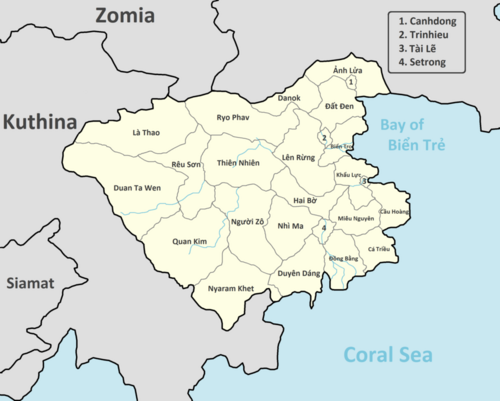 |
Provinces | |||||||||
| Ảnh Lửa Province | Trụ Trời | 3,160,053 | Đất Đen Province | Hang Nhài | 5,106,083 | |||||
| Biển Tro Province | Âm Nhạc | 3,011,280 | Lên Rừng Province | Bắc Lai | 3,036,131 | |||||
| Khẩu Lực Province | Tre Nui | 3,507,748 | Hai Bờ Province | Giáo Điện | 4,582,382 | |||||
| Miếu Nguyên Province | Miếu Nguyên | 2,926,964 | Cầu Hoàng Province | Sự Kỷ | 3,655,432 | |||||
| Cá Triều Province | Cá Triều | 3,131,731 | Đồng Bằng Province | Rangcao | 3,079,361 | |||||
| Duyên Dáng Province | To Song | 3,037,465 | Nhì Ma Province | Pháo Hoa | 2,555,660 | |||||
| Người Zô Province | Người Zô | 1,623,472 | Thiên Nhiên Province | Ngày Lể | 1,466,362 | |||||
| Rêu Sơn Province | Rêu Sơn | 2,042,433 | Quan Kim Province | Quan Kim | 2,912,552 | |||||
| Autonomous Provinces | ||||||||||
| Danok Province | Lapei | 3,037,466 | Ryo Phav Province | Xouayhay | 3,169,785 | |||||
| Là Thao Province | Sakhon Hanom | 3,320,089 | Duan Ta Wen Province | Inong | 2,213,393 | |||||
| Nyaram Khet Province | Jowkmat | 4,192,033 | ||||||||
| National Cities | ||||||||||
| Trinhieu | 5,566,532 | Setrong | 7,203,164 | |||||||
| Tài Lẽ | 1,223,391 | Canhdong | 1,544,711 | |||||||
Law enforcement and crime
Nainan's law is based on civil law, and the highest judiciary is the Judiciary Committee (委班四法; Ủy ban Tư pháp), this court is both a civil and constitutional court and is the highest court of the country. There are provincial and municipal courts as well, but all courts report to the Judiciary Committee.
The law enforcement of Nainan is run by the Ministry of Security. The largest police force of Nainan is the Public Security Force of Nainan (力量公安奈人; Lực lượng Công an Nài Nhân), that nearly entirely deals with most matters of law enforcement. The other major national agency is the Civil Security Force of Nainan (力量安寧民事奈人; Lực lượng an ninh dân sự Nài Nhân), a grendamarie force that is tasked with federal crimes. There are also provincial level agencies and municipal level agencies that patrol their designated subdivisions, but still all police agencies in Nainan report to the national police. As of 2020 there are around 90,000 law enforcement officers active in all of Nainan.
Crime in Nainan is considered somewhat average on a global scale, there are still many issues that exist in Nainan today. During the short period after independence crime in the Kingdom of Nainan grew and became prevalent in the cities of Trinhieu and Setrong. Organized crime organizations had formed and have continued to exist, despite the government's efforts to take them down. These mafia-like organizations still exist today and engage in crime such as drugs, smuggling, prostitution, and fraud. Many sources have given these organizations a name known as the Rễ Cây (𣑶𣘃; lit. "the roots"), and many cities such as Canhdong today have become hotbeds for crime done by the Rễ Cây. Today the government has recently increased in their push against the Rễ Cây and have recently vowed to "destroy them". The average homicide rate in Nainan is 1.6 per 100,000 and has grown around 1.52% per year.
Nainan's central intelligence agency is the infamous Authority of Culture and Investigation (機關文化吧調查; Cơ quan Văn hóa và Điều tra), and is commonly referred to as the "Van Dieu" (文調; Văn Điều). It serves as both the main domestic and foreign intelligence agency of Nainan, it is seen as a secret police force by many and is has been once called "the central weapon of the party", it also has been accused of using excessive and unethical tactics in it's efforts. It is equipped with a special operations force and a paramilitary wing, and is considered the government's main force when it comes to crushing dissent and foreign influence in Nainan. There are other, smaller intelligence agencies including the Information Defence Force (力量房首通信; Lực lượng phòng thủ thông tin), dealing with cyberwarfare matters, and the National Security Authority (機關安寧國家; Cơ quan an ninh quốc gia), pertaining more towards counter-terrorism.
Foreign policy
Having the state ideology of Tự Ý Chí being based heavily on the ideals of National Principlism, Nainan since the 1960s has been in close ties with Shangea, as well as Siamat. Nainan today has maintained relations with their neighbors in Southeast Coius. Nainan has been keen on promoting anti-imperialism in Coius, and has recently began to seek closer relations with nations like Zorasan, Mabifia, and Ajahadya, and has regularly been a close ally of ROSPO. They have been supportive of making Coius self-supportive and without the influence of Euclea, they have also regularly opposed the spread of Senrian influence and organizations such as SAMSO or COMDEV, calling Senria a "puppet" of the north. Despite their anti-Euclea sentiment Nainan has recently attempted to reach out to Euclea on grounds of "maintaining close contact" with the continent.
The country has had troubled relations with Kuthina, and have been supportive of the pro-Shangean state of Heijiang, offering aide and support to the latter. The country also takes an anti-socialist stance ideologically according to Tự Ý Chí, and has had difficult relations with it's socialist neighbors in the Brown Sea Community. In recent years relations with the BSC have cooled down and focused more on the cultural relations Nainan has with the BSC nations, namely the importance of Badi faith, though the persecution of socialists in Nainan has kept relations difficult. The country has began to approach cultural ties with nations more, such as Zohist and Badi faith, and linguistic relations. Nainan is currently a member of the BUD, IFDS, and the CN.
Military
The armed forces of Nainan is called the People's Army of Solidarity and Longevity (軍隊人民團結場存; Quân đội nhân dân đoàn kết trường tồn), it has five different branches, the ground force, air force, navy, national guard, and special operations. Nainan has around 532,000 activer personnel, over 2,100,000 in reserves, and 90,000 in paramilitary service. It is one of the largest militaries in the world, this is mostly due to compulsory service being enforced by the government for all citizens.
The commander-in-chief of the military is the State Director, as well as the Central Council, is managed by the Ministry of Defense. The military takes up around 7.8% of Nainan's GDP and has a budget of over 10 Billion. The Military is lead by the Chief of Staff, which serves on a position in the Central Council.
The Nainese Ground Forces are the largest branch of the military and makes up most of the military personnel. The Nainese Navy is very large, and is the second largest branch of the military. The Nainese Air Force is responsible for air combat and rocket defense systems. The Nainese National Guard encompasses both the Coast Guard and Border Guard of Nainan. The Nainese Special Operations specializes in specific ares such as cyberwarfare, engineering, and spec ops. Most members of the paramilitary parts of the military are part of the armed wing of the NPSL, the Nainese Revolutionary Guard.
Economy
Trade
Energy

Nainan's energy sector has historically been dominated by fossil fuels, recently it's energy sector has become very diverse. The country's energy sector is mostly controlled by the state-run company, Nainan Energy and Resources Service, which has control over 63% of Nainan's energy production. Today Nainan consumes a total of 121.20 billion kWh of energy.
Fossil fuels are the largest source of Nainan's power, the biggest of them being coal. The country has 60 total coal mines located across the nation, these make up over 45% of the country's total energy production.
Hydroelectric power is the second largest energy producer in the country, thanking much of it's usage to the many large rivers that can be used for dams. Nainan has a total of over 650 dams across the country, the largest being the Sao Trắng Dam. Hydroelectric power generates up to 30% of Nainan's total energy.
Natural gas is the third largest source in the country, it has begun to increase slowly in recent years. Nainan has over 30 gas power plants in the country. It makes up around 15% of the total energy consumption of Nainan.
Oil is also a source of energy in Nainan. Other renewables include solar and wind, which are common in sunny areas or along the coast of Nainan. Nainan's government has plans to develop and build three future nuclear power plants.
Infrastructure

Before the late 20th century, Nainan's infrastructure was very weak and mostly relied on the waterways and rivers for transportation. It did experience growth as the Weranian government issues various projects such as roads and railways during their colonial rule, but still was behind neighbors like Shangea, especially after the Nainese Civil War did the infrastructure of Nainan be damaged. Since then Nainan's infrastructure has seen massive growth within the passed few decades, especially at the beginning of the 21st century, when the government began to massively modernize the country. It is considered one of the fastest growing economies in the world in terms of it's infrastructure and transportation. Over the passed few decades over 200,000 km of roads and 9,000 km in railways have been built in Nainan, including many national road expressways connection major cities and metro stations in Setrong and Trinhieu. There are 12 major ports and harbos located in Nainan's coastal and riverside cities, the largest being Setrong Regional Port. Dozens of public international and regional airports have been built recently, the largest being Hoàng Viện Trai International Airport in Trinhieu, Greater Setrong International Airport, and Thành Phố Thuyền International Airport in Canhdong.
Agriculture
Agriculture has always been a major part of Nainan's economy, though only 29.5% of Nainan's land is considered arable, most of the population of the country lives near the areas where farming was made possible. Agriculture makes up over 30% of the country's gross domestic product. Rice farms are the most common agricultural product of Nainan, which rice paddies and farms located all across Nainan, it is among the biggest rice exporters in the world, producing 43.2 million tons of rice per year. Rice has been an essential part of Nainan's diet and culture for thousands of years. Nainan is the world's leading producer of black peppercorn, with plantations located all across the country, it produces over 200,000 tons of black pepper a year. There are dozens of other agricultural products grown in Nainan, including cashew nuts which it is also the world's leading producer, rubber, coffee, coconuts, and tea. Maize, cassava, and tomatoes are recently introduced products that have become a major part of the country's agriculture sector as well, mostly were brought with trade from Euclean colonies in the Asterias, and more so during Weranian rule. In recent years the Nainese government has tried to emphasis the importance of agriculture to the economy.
Fishing
Nainan has a large fishing industry. It makes most of it's catches from capture fisheries or through aquaculture. Fishing villages are a common sight in some parts of Nainan where the majority of the town's populace work as fishers and live on the water, having fish be a major party of their diet.
Industry
The manufacturing industry makes up over 40% of Nainan's GDP, but it also only makes up around 15% of the nation's workforce. Nainan is a manufacturing hub in Coius, taken advantage of for it's low labor costs. From 1990 to 2000 the manufacturing output of Nainan grew by 20%. In recent years Nainan has developed an automotive industry sector, another large sector if the manufacturing of electronics such as phones Other major sectors include food processing, tobacco, textiles, and footwear.

Tourism
Demographics
Ethnicities
Nainan is very ethnically diverse country, the dominant ethnic group of the country are the Nainese, who mostly live in the eastern and coastal half of the country. In the 2019 census around 70.2% of the country are Nainese, 8.2% Nyaram, 6.6% Makhao, 4.1% Ryo, 3.9% Danok, 2.2% Kasi, 1.8% Kachai, and 2% others. Other ethnicities include the Siakay, Khiang, Cheoku, Svai, and Shangeans.
The Nainese people have existed in the area since ancient times. They mainly settled around the Serpent River and Black River, their ancestors are known as the Nài Hóa people. The Nainese people have expanded westward and inland within recent centuries, pushes out some of the other ethnic groups in the region. The Nainese government has at times been accused of trying to push the dominant culture onto it's minority groups, which it denies.
Some major ethnic groups include the Nyaram, located in the southern area of the country on the border with Kuthina. The Kasi Makhao, a subgroup of the Kasi people, in the west and also on the border with Kuthina. The Ryo, located in the northwest around the border with Zomia. There are then the Danok, a group settled along the Black River in the north of the country. There also are Kachai minorities in the north and Kasi minorities along the southeastern border. Smaller groups include Svai and Shangeans, who mostly are migrants from Siamat and Shangea, which Nainan has close ties with.
Languages
The largest spoken language is Nainese, mostly spoken by the Nainese people, it is part of the Naitic-Khiang group of the !Austroasiatic family. There are three major dialects of the language, each centered around the geographic and cultural areas of Nainan. These three dialects are the Northern Nainese, centered around Trinhieu, Central Nainese, centered around Tài Lẽ, and the Southern Nainese, centered around Setrong. The largest of these dialects is the Northern Nainese, which historically has also had the most importance.
The language of Nainese developed thousands of years ago, it's historic writing system was Shangean characters, which became the central writing system of the Nainese language. Nainan today mainly uses the script of Chữ Đông when writing Nainese, which uses Shangean characters. During the 16th century Sotirian missionaries from Paretia, Calisto Rodrigues and Breixo de Neira created a solarianized form of the language in order to easily communicate with the Nainese sotirian community, this writing system became known as the Chữ Mới alphabet. Werania began to promote using Chữ Mới heavily during it's colonial control of Nainan, today it is commonly used as a second script, seen usually when communicating with Eucleans.
Nainan is a linguistically diverse country, even though the majority speaks Nainese. There are over 100 languages spoken in the country, although most of them are in very small groups. The largest spoken languages aside from Nainese are the Nyaram, Makhao Kasi, Danok, and Ryo. Other large minorities include Choeku, Kasine, Khiang, Siakay, and Kachai.
Religion
Reigious affliation of Nainan (2019 census)
Nainan is a religiously diverse nation, with no religion having an absolute majority in the country since the 17th century. There are two dominant religions in the country, Badi, and Zohism. For most of Nainan's history the country followed Dai Tin, Nainese folk religion, or Zohism due to Shangean and Svai influence. In recent centuries Badi has set itself as a major religion of the country, although many practice syncretic faiths combining both Badi and Zohism mixed with Dai Tin. Most Badi live in the north and eastern halves of Nainan, whilst most Zohists live in the south and west halves. Some minority groups include Irfan, mostly Danoks, Sotirianity, mostly converts during Weranian rule, non-religion, and Dai Tin.
During the early centuries of Nainese history the Zohists had by far the majority, especially during rule of the Svai Empire. This remained the case until the rise of the Great Lương dynasty, lead by Lady Lương and Sang Quang Huy, both Badists. The Lương began to enforce Badi onto the Nainese during the next three centuries and converted nearly 40% of the country to the faith by the fall of the dynasty.
Over the next centuries the faith of Dai Tin greatly fell in practice, though it was mainly syncretic with Badi and Zohism. A Zohist revival during the 17th century and Aguda Empire influence lead to continuing growth of the two religions in Nainan. During the Nainese Commissariat the Weranians had many missionaries that spread Sotirianity to the country, converted several thousands within the first few years. In the 20th and 21st centuries irreligion and atheism had become more popular. During the NPSL the government promoted syncretic mixing of faith, as NPSL leader Hoàng Viện Trai practiced both Badi and Zohism. Today Nainan is both one of the largest Badi and Zohist nations in the world.
Cities
Largest cities or towns in Nainan
National Statistics Organization, 2020 Census | |||||||||
|---|---|---|---|---|---|---|---|---|---|
| Rank | Province | Pop. | Rank | Province | Pop. | ||||
 Setrong  Trinhieu |
1 | Setrong | - | 11 | Sự Kỷ | Cầu Hoàng Province |  Canhdong  Tài Lẽ | ||
| 2 | Trinhieu | - | 12 | Rêu Sơn | Rêu Sơn Province | ||||
| 3 | Canhdong | - | 13 | Cá Triều | Cá Triều Province | ||||
| 4 | Tài Lẽ | - | 14 | Tre Nui | Khẩu Lực Province | ||||
| 5 | Rangcao | Đồng Bằng Province | 15 | Âm Nhạc | Biển Tro Province | ||||
| 6 | To Song | Duyên Dáng Province | 16 | Pháo Hoa | Nhì Ma Province | ||||
| 7 | Giáo Điện | Hai Bờ Province | 17 | Lapei | Danok Province | ||||
| 8 | Hang Nhài | Đất Đen Province | 18 | Quan Kim | Quan Kim Province | ||||
| 9 | Trụ Trời | Ảnh Lửa Province | 19 | Hung Cai | Hai Bờ Province | ||||
| 10 | Jowkmat | Nyaram Khet Province | 20 | Inong | Duan Ta Wen Province | ||||
Culture
Art
Art in Nainan has stayed very consistant over the years, through it has been influenced by a wide array of neighboring cultures as well as colonial ones. It has not changed much and today Nainese is mostly traditional in style.
The earliest pieces of art in Nainan is pottery from the earliest cultures of the region. The Nài Hóa culture, the ancestors of the Nainese, are famous for their Dong Son drum, considered a cultural symbol in Nainan. Later the influence from Shangea would greatly shape much of Nainan's artistic style, inspired heavily from it. Shangean and Svai influence lead to Zohism having a central role in Nainese art. The Great Lương dynasty is usually considered the Golden Age of Nainese art, the period saw the create of hundreds of pieces of art and many famous artists. Later on Badi had an influence on Nainese art, during the Vĩnh dynasty theatre became a central part of Nainan. Colonial rule saw Euclean ideas enter Nainan and the beginning of Nainese modern art in the 20th century. Today traditional art is still more common than modern art styles. Propaganda posters are a common form of art found across Nainan.
Nainese art is usually done on paper with silk, and usually is hung on a wall. Pottery making is also a common practice in Nainan, with decorative art usually put onto them. Another form of art in Nainan are Đông Hồ paintings, which are a woodblock painting using paper press onto a piece of wood. Nainese ceramics are highly decorative and sought after.
Architecture
The architecture of Nainan has lots of inspiration and influence from others, and is very similar to architectural styles in other southern Coian nations like Shangea, Kuthina, Lavana, and Senria. Traditional Nainese architecture focuses a lot of symmetry, wooden framework, and stone or brick in foundations. They commonly use things such as hip-and-gable roofs, with curved eaves. Uses of decorative things like stylized characters, religious symbols, and the colors red and yellow.
More rural or lower class Nainese households are typically made only of wood, one commony type of house is the stilt house, build on wooden stilts and usually one floor. Stilt houses are commonly seen on riverside or seaside towns where flooding is common, and sometimes are built onto the water. Entire towns in Nainan can be made up of stilt houses.
Early on Nainan initially adopted many things from Shangean architecture and eventually other Southeast Coian cultures. When Zohism arrived in Nainan it greatly influenced the architecture of the country, culminating in things like the use of pagodas of which there are many across Nainan, and are used in both Zohist and Badi temple architecture. Many palaces were built by various dynasties over time, the largest being the Imperial Citadel of Tài Lẽ, built by the Great Lương dynasty in the 12th century.
During the Colonial Period under Werania, Euclean styles began to influence Nainan greatly and many buildings were built in the style known as Weranic Colonial Style. These include government offices and palace, and many hotels in Setrong and Trinhieu. After the colonial period Nainan's architecture began to adopt a more global style while also promoting traditional ideals. In the 21st century Nainan has begun to modernize beginning to build glass and steel skyscrapers in it's major cities.
Literature
Nainese literature has a long and rich history that dates back centuries, the earliest works being official documents from the Giang dynasty period. A central part of Nainese literature is folk literature, these forms of stories are commonly orally passed down from generation to generation and are commonly written in the form of six-to-eight poetic line form called ca dao. Nainese folk stories can range from village to village and commonly center around folk heroes.
Folk literature includes myths, stories of mythical creatures, spirits, gods, and heroes. These can include creation stories, which center around creation gods, stories about the origins of the Nainese, as well as culture hero stories. Some notable Nainese folk dieties include the The Four Immortals. Some notable folk myths include Sơn Tinh – Thủy Tinh, and The Story of Uyển and My.
Written literature in Nainan is usually dated back to during the late Svai Empire rule and early Great Lương dynasty. There are many well-known great authors and poets from across Nainan's history over the centuries Thảo Trọng Nghĩa, Nguyễn Minh Giang, Nguyễn Chính Thuận, Tường Vinh, and Đàm Gia Nghị. Nainese poetry has become a very developed form of poetry that dates back to the pre-Nainese cultures in the area. Nainese history has had lots of changes over the centuries, things such as rhythm (phú), and tones (bằng and trắc) were important parts of Nainese poetry, word play also has a role in the writing of poetry. The most notable examples of Nainese poetic works include The Girl Named Hân by Tường Vinh, and The Tale of Huỳnh Phúc Sinh by Đàm Gia Nghị. Musical storytelling in Nainese culture is known as Ca trù, and is commonly sung by a female singer with musical instruments backing up, and usually tell folk stories and poems.
Modern Nainese poetry came out from the Thơ mới movement which was prevelent during Weranian colonial rule in the 1920s and 30s, and takes some influences from Werania and other Euclean cultures in their forms. Some notable Thơ mới and modern poets from the past century include Võ Bảo Hiển, Nguyễn Xuân Khoa, and Lê Hiền Mai.
Music
Nainan's music varies between the north and south slightly, both having differences influences during Nainan's history. Much of Nainan's traditional music has gotten it's influence mainly from Shangea, like much of other aspects of Nainese culture, Shangean opera had a major influence on Nainese traditional music and Nainese opera. Nhã nhạc is a form of imperial music formed during the Great Lương dynasty. Chèo is a form of satirical musical theatre formed in Northern Nainan amongst Nainese peasants, dating it's origin to during the Ban dynasty in northern Nainan, it was commonly used by the Lương as a form of addressing issues in the country, and was even using by the Lương government. Xẩm is a form of Nainese folk music, which formed in northern Nainan. Đàn bầu, Quan họ and Chầu văn are other examples of forms of Nainese folk music. Euclean influence occured during the colonial ruled of Werania during the early 20th century, other influence form other Euclean nations also occured. Ca trù is another form of traditional music accompanied by a female vocalist.
Some Nainese instruments include Đàn gáo, Đàn nguyệt, Đàn tranh, T'rưng, Đàn nhị, and the K'ni.
Nhạc dân tộc cải biên is a more recent form of Nainese traditional music formed around the time of independence from Werania. Classical music such as opera arrived in Nainan during colonial rule. During and after the Nainese Civil War two genres of music arose in Nainan, Gold music and Green music, the latter being more easternized and the former more nationalistic. During the 1990s the Nainese government began to allow more genres of music that are more eastern in origin.
Contemperary music in Nainan is much more diverse today and includes many genres. N-pop, short for Nainese popular music, is a very popular genre of music in Nainan today, many N-pop artists have made a name for themselves in Nainan today. Other genres such as rock-n-roll, hip hop, and karaoke have become popular in modern Nainan.
Cuisine
Nainese cuisine is centered around a combination of 5 flavors, called ngũ vị. Nainese recipies generally include things such as rice, lemongrass, ginger, Nainese mint, long coriander, Setrong cinnamon, and Kasi basil. 60% of Nainese households use fish sauce(nước mắm) in their meals, the rest mostly use soy sauce. A common beverage in Nainan is jasmine tea.
Historically Nainan was influenced greatly by the Shangean culture. This included Shangean cuisine, many Shangean foods were introduced to Nainan and have become of a part of the culture, including wonton, char siu, har gow, chow mein, popiah, shahe fen, and baozi. Nainese also are said to have adopted roasted pork from Shangea, thanking from Shangea's influence.
Nainan was later influenced by Euclean foods, in Nainese the word Bắc is added to food, meaning north, named after the fact Euclea is located in the North. Especially during Weranian rule was Nainan introduced ot Euclean cuisine, including bratwurst and schnitzel. Bánh mì thịt originates during Weranian rule and it uses Euclean breads such as baguette. Weranians introduced ingredients such as onions, potatoes, cauliflower, coffee, lettuce, carrot, and tarragon. Various beverages were also introduced by Werania. Other places that influence include the Danok cultures as well as neighbors such as Siamat and Lavana, prahok was introduced to Nainan by Svay people.
Nainan has different cuisines depending on the location of the country, in the North, black pepper is a common ingredient in foods, foods from the capitol Trinhieu include Bun cha, Bánh cuốn, and Chả cá Lã Vọng. Seafood such as mullosks, fish, prawns, clams, and shrimp are common in Nainese cuisine due to the influence of the coast. Use of sauces such as fish sauce, soy sauce, and prawn sauce are common in Nainan.
Central Nainan is known for it's use of spices, which are commonly grown in the area, the city of Tài Lẽ is known for it's colorful and spicy food. The region's cuisine is also known for it's complexity in it's recipies and it's use of chili peppers as an ingredient. Some foods from the central areas of Nainan include Bún bò Tài Lẽ, Bánh xèo, and Mì Quảng.
Southern Nainan centers it's cuisine around the city of Setrong and the Serpent River Delta, the region uses ingredients such as many different fruits, vegetables, and livestock. It's food uses sugar, garlic, shallot, and many different kinds of herbs. Coconut milk is also used a lot in southern Nainan. Commong dishes in southern Nainan include Bún mắm, and bánh khọt.
According to Nainese culture, the five elements in are water, fire, earth, metal, and wood. Each influence different parts of the food such as spices, organs, colors, senses, and nutrients.
Clothing
Trang phục Nài Nhân (裝服奈人), lit. "clothing of Nainan". Nainese has both unique elements as well as foreign elements in it's style and designs. The Nainese get much of their clothing influence from places like Shangea, with slight differences from their Shangean counterparts in the design of the clothing.
Early Nainese clothing included things such as the áo tứ điên, a common cloth clothing, as well as the áo giao lĩnh, a robe commonly worn in ancient and medieval Nainan. During the Vĩnh dynasty the Nainese would adopt a new dress for women known as the áo nhật bình. Euclean influence began to spread in Nainan especially after Weranian colonization. Nainese shoes adopted much of their design from their Shangean neighbors.
During the later years of colonization more Nainese women would begin to wear the Áo dài, a very popular dress in Nainan and is the country's national garment. The Áo gấm, a brocade tunic for men similar to the Áo dài also became popular. A common blouse or undergarment for Nainese women is the Yếm.
A common garment worn in modern-day Nainan is the Áo bà ba, it is commonly worn in warmer weather and in more humid climates. Nainese people still commonly wear the Áo dài , many still also wear traditional clothes during traditional events.
Some traditional costumes in the country include the Áo tứ thân and the Áo tấc. Nainan is home to unique headwear that have become national symbols of the country. Including the nón lá, a pointed hat commonly associated with rice farming, as well as the Khăn vấn, a traditional turban worn commonly in Nainan.
Sports
Symbols
Festivals and Holidays
| Date | Estmerish name | Native Name | Notes | National Holiday |
|---|---|---|---|---|
| 1 January | New Year's Day | 𣦍兜𢆥;Ngay Đâu Năm | Euclean New Year | |
| 6 February | Day of Nainese Revolution | 𣈜革𠇮奈人;Ngày Cách Mạng Nài Nhân | Foundation of the Harmonious Republic | |
| January or February | Tết | 節元旦;Tết Nguyên Đán | Nainese Lunar New Year | |
| A Sunday in spring | Easter | 禮服生;Lễ Phục Sinh | Celebrated by Nainese Sotirians | |
| 1 May | International Workers' Day | 𣈜勞動;Ngày Lao Động | ||
| 22 August | Wandering Souls Day | 誣蘭;Vu Lan | ||
| 10 September | Mid-Autumn Festival | 節中秋;Tết Trung Thu | ||
| 27 October | National Day of Solidarity | 𣈜團結;Ngày Đoàn Kết | Celebration of unification of Nainan at end of Nainese Civil War | |
| 1 December | Soldiers of the Harmonious Republic Day | 仍𠊛𪜯𧵑𣈜共和鞋和;Những Người Lính Của Ngày Cộng Hòa Hài Hòa | Celebration of the Armed Forces of Nainan | |
| 25 December | Christmas Day | 䧏生;Giáng Sinh | Celebrated by Nainese Sotirians |



